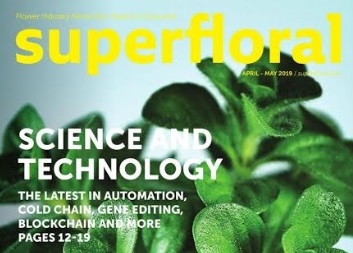CRISPR and the Flower of the Future
CRISPR… have you heard of it? It’s heavy duty genetic science. What does it have to do with flowers? Well, “Late in 2017, science journals reported that Japanese researchers had genetically manipulated morning glories, altering a single gene to turn violet-colored flowers white. The technology they used? The genetic editing tool CRISPR-Cas9.”

This was the intriguing opening of a recent article Floralife produced for Super Floral Magazine’s recent Science and Technology issue. “CRISPR and the Flower of the Future” discusses the technology, the impact it’s making in other fields, and its potential impact on floriculture.
What is CRISPR?
Changing the color of flowers is only the beginning. There are many interesting possibilities offered by this technology. But first, how it works:
“Very simply, CRISPR (Clustered Regularly Interspaced Short Palindromic Repeats) snips the threads that hold blocks of DNA in sequence. When you find the precise trait you wish to alter, you snip the threads and replace it with a modified version. In practice, it behaves much like a vaccine that absorbs and mimics viruses to activate the immune response in animals.”
And what traits might you wish to alter in a cut flower? Ethylene sensitivity is definitely a candidate, among others.

Ethical Objections?
Is there ethical resistance? Not as much as you might expect. Its proponents are quick to point out that this is NOT GMO. No “Frankenflowers” here! A GMO is when foreign traits are grafted onto a host; that IS controversial, particularly in food. A CRISPR product contains only traits that are native to the host.
As a result, it is far less regulated than GMO, which makes research far more cost-effective. This is why the AFE Technology Committee is fully on board, providing funding for various CRISPR floral research projects.
The Future of CRISPR
What’s the future hold? With further research, “we could have an entirely new tool in the box to help flowers last longer and remain healthy, even as our industry grapples with evolving retail channels, new shipping methods, and ever-increasing distances from farm to consumer.”
Check it out in the pages of Super Floral, or read the PDF here.
